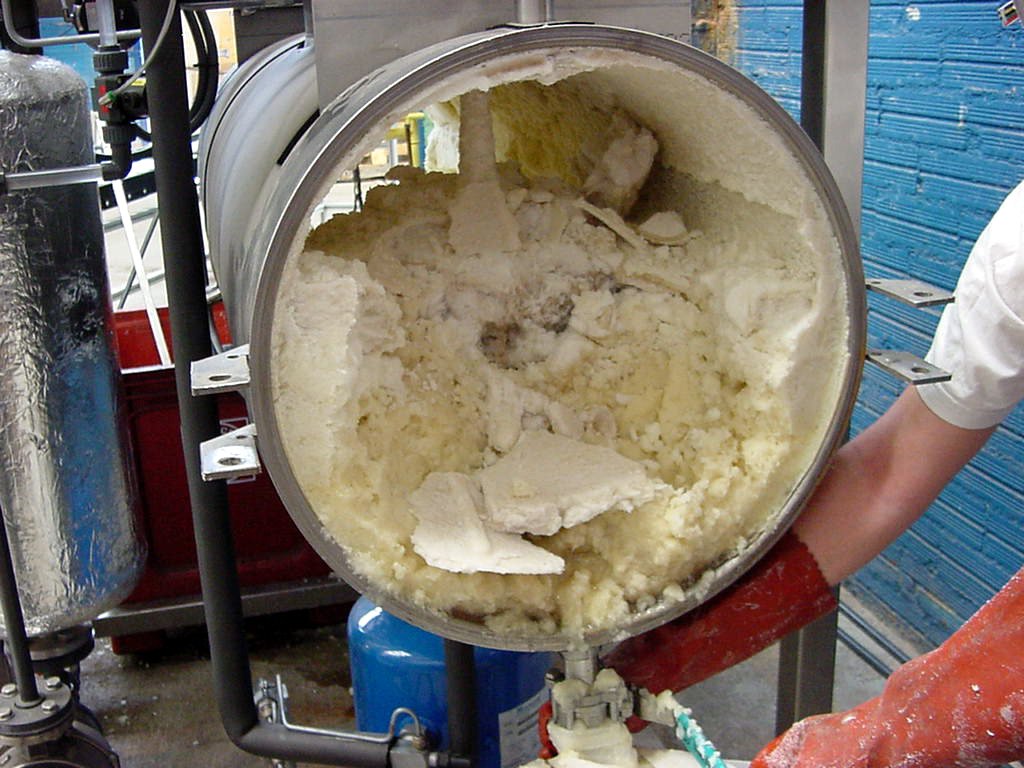
The treatment of brines is one of the major environmental concerns for companies that generate this type of waste, due to its high contaminant load and the difficulties involved in its treatment.
Brine is a concentrated aqueous solution containing one or more salts, usually sodium chloride. Brines are generated in multiple industrial activities, with the most common being power generation plants, the leather tanning industry, the food canning industry (olives and pickles, salted products, hams and sausages, etc.), the chemical and pharmaceutical industries, as well as all those that treat large volumes of water (softening, demineralization, reverse osmosis, etc.).
Saline effluents, even if they are not hazardous, must be properly managed, as uncontrolled discharge can cause a significant environmental impact. This management is not always straightforward, and the most suitable option always depends on a long list of factors, such as flow rate, concentration, geographical location, availability of residual energy sources, etc. Among the possible management options for brines, there is no doubt that the most environmentally sustainable approach is to address their treatment.
Conventional techniques (physicochemical and biological treatments) are not viable for treating brine effluents. To ensure maximum efficiency, techniques such as reverse osmosis, electrodialysis, and vacuum evaporation must be employed. Depending on the initial salt concentration of the brine, a preliminary concentration process of the effluent using reverse osmosis may be advisable. If the brine concentration is already high, the reverse osmosis stage can be omitted. Next, the concentrated brine undergoes a vacuum evaporation process where it is further concentrated, and a high-quality water stream is generated that can be mixed with the water produced in reverse osmosis. Finally, through a crystallization process, the salts are obtained in solid, crystallized, and dry form. The salts can be repurposed for use in frost control, resin regeneration, etc.
In the concentration stage, the reverse osmosis process can be replaced by an electrodialysis system, which would also allow for the concentration of the brine effluent and produce a water flow with a very low salt concentration.
If there is any residual energy source available, it can be utilized in the vacuum evaporation process, achieving excellent results at a very competitive price.
Reverse osmosis and electrodialysis are processes that can optimize the treatment of brines. However, on their own, they do not constitute a treatment alternative, as they produce a flow of salt-free water in exchange for always generating a residual effluent, in this case with an even higher salt concentration.
The key technology in brine treatment is vacuum evaporation, a technique in which Condorchem Envitech is a specialist company with extensive experience in designing and building equipment that best adapts to the particularities of each client.
The vacuum evaporators have proven to be, by far, the most successful application technology for this type of waste effluent. They allow, on one hand, to achieve the highest possible degree of concentration, even to the dryness of the salt, and on the other hand, to obtain a purified effluent that can usually meet the usual discharge limits due to its low conductivity and presence of organic contamination.
The management of the concentrate is the most challenging aspect of the treatment. We must try to minimize it as much as possible and economically viable, as its final destination will be waste management (if it is a very concentrated brine) or even landfill, in the case of being able to precipitate the salt.